Content
Methods for planting viola and proper care for it in the open field
The delicate beauty viola, the cultivation of which is not particularly difficult even for a novice grower, will decorate any corner of the garden. Pansies, this is the name that this plant has among the people, is grown not only by seedlings: some prefer to sow seeds immediately into the ground.
In order for the plant to please with bright, various shades of large flowers, you need to try to find a site with optimal conditions for the growth and development of viola.
Viola
A small plant, growing up to a maximum of 30 cm, has a bright single flower on a long stem. Flowers can be of various shades and shapes. The culture belongs to the violet family, among which it stands out for its decorative effect. Viola can be perennial or annual. Most often, she helps designers decorate curbs or decorate short shrubs. Low-growing varieties are used to decorate alpine slides.
This plant is unpretentious - even when transplanted into open ground during flowering, it easily adapts to new conditions. The flowering time of the viola depends on the planting period and the variety. The sooner the pansies are planted, the sooner they will delight with colorful flowers.
The culture grows well in open areas in direct sunlight. However, at the same time, she cannot stand extreme heat. Therefore, when choosing a place, you should pay special attention to the fact that for some time the flower falls into the shade. Viola will grow well even in low light. However, its flowers will be smaller and not as bright as the one that grows in the sun.
There are many varieties of viola. Among them, ampelous stands out, which in the process of development forms a ball, strewn with a large number of flowers. It is most often planted in hanging pots. Ampel violet tolerates cold well and is very undemanding. Within half a month after sowing the seed, you can admire its flowers. The ampelous flower variety requires the same care as other varieties of this plant.
Growing viola
Planting viola outdoors is not a particularly difficult task. It is important to consider a few points before planting this plant:
- Soil: Non-moisture, warm, and nutrient-rich - mixing loamy soil with humus is a good option. For violets, before planting, you need to prepare a soil substrate consisting of turf, humus and peat, taken in equal amounts and sand, the amount of which is half the amount of the rest of the soil mixture.
Important: You should not choose a lowland for planting viola: closely located groundwater will contribute to stagnation in the roots of the plant.
- Planting time: selected based on climatic conditions in the middle or late spring.
- Planting site: grows well in partial shade with a lot of ambient light.
Important: Ampel violet and other varieties of viola that grow under the sun will give large and bright flowers, but they will wither faster than those that grow in partial shade.
Pansies are planted by the end of spring in the ground in several ways:
- Seeds
They can be sown directly into the prepared soil at the rate of about fifty seeds per meter of furrow. You can sow in holes located at a distance of about 6 cm. At the same time, 3 - 4 seeds are placed in each hole. The planting depth is about 0.6 cm. Before sowing, it is advisable to treat the seed material with a solution of "Zircon" or "Epin" for a day.
After sowing the seeds, the grooves or holes should be sprinkled with earth, lightly sprinkled with water and sprinkled with sawdust to retain moisture in the soil. Viola, sown with seeds, will begin to bloom by the end of spring - early summer.
Advice: The emerging sprouts need to be shaded for 2 - 3 weeks so that they are not directly exposed to hot sunlight. This will help save weak seedlings from burns and strengthen them.
- Seedlings
To obtain seedlings, seeds are sown similarly to the previous method. They are only grown indoors. At the same time, they are subjected to picking twice: a couple of days after germination and at two weeks of age at a distance of 6 cm from each other. Two-month-old sprouts are transplanted to a permanent place in open ground.
Important: The trumpet variety of viola, as it develops, forms a large flowering ball, therefore it is often sown in hanging containers filled with drained soil in advance.
- Cuttings
The plant grows older every year, its flowers become smaller, there are fewer of them. To rejuvenate the bush, you need to use the cuttings method. First, you need to prepare the place where the cuttings will be planted - it should be shaded with enough moisture. On an adult bush, green apical shoots with several nodes are cut off (it is better if there are 2 - 3). The petioles are planted tightly on the garden bed, deepening by about 0.5 cm.Then they are covered with wet material to speed up the adaptation process.
After that, care consists in daily watering and weeding. After about a month, all the cuttings should already take root, then they can be planted in the prepared beds. With a late procedure, flowers are transferred to a permanent place in the spring.
Tip: Rooted petioles begin to bloom in spring. You can achieve earlier flowering by cutting by late spring - early summer.
Plant care
After planting plants in the ground in a permanent place, it is necessary to create favorable conditions for their development. Despite being undemanding, viola is still sensitive to some aspects of cultivation. Viola care in the open field consists in the following actions:
- The sun: necessary for abundant flowering. However, excess sunlight and high temperatures lead to drying out of the plant, so if a hot summer is likely, it is better to choose shaded places for planting. When predicting the cool season, it is best to choose open areas so that the plant gets maximum light and heat.
- Watering: daily, as pansies do not react well to dry weather. They also don't like a lot of moisture, so watering should be done sparingly.
Important: High humidity is a factor of rotting and decay of the plant, which can lead to its death.
- Top dressing: to prolong the flowering period of a crop, it is necessary to produce them regularly. It is advisable to apply complex mineral fertilizers in open ground 1 - 2 times monthly, depending on the condition of the soil. For feeding, you can use ammonium nitrate or superphosphate, which are taken in an amount of 30 g per 1 m2... The flower does not like organic fertilizers, especially fresh manure should not be applied.
- Weeding: regular removal of weeds, which prevent flowers from growing and developing, depriving them of nutrients, sunlight, moisture.
Tip: To prolong the flowering time of the viola, you need to regularly remove the wilted flowers.
- Loosening: a regular procedure allows air to penetrate to the roots.
- Pest control: for this, the plant is treated with the necessary means. Powdery mildew most often affects the plant if the sprouts were abundantly fed with nitrogen preparations or there was a drought. For the treatment of pansies, they are treated with a soap solution of soda ash or Fundazol."Fundazol" is also used for irrigation when infected with gray mold or black leg, which infect sprouts when the agronomic conditions of plant growing are violated.
- Preparation for wintering of perennial varieties: sheltering sawdust, fallen leaves, spruce branches, which will need to be removed in early spring.
Viola, planting and caring for which was correct, will delight the grower for a long time with bright and lush flowers. Ampel violet will look beautiful in hanging containers. At the same time, it requires the same conditions as other varieties of this plant.
It is better to replant in shaded soil, where there is a large amount of diffused light. At the same time, it is important that the soil is drained, capable of passing water well. It is also necessary to regularly water the flowers, which, during a drought, simply stop growing and blooming. When collecting seeds, you need to pick off the yellowed capsules in order to have time to collect them before the seeds wake up to the ground.
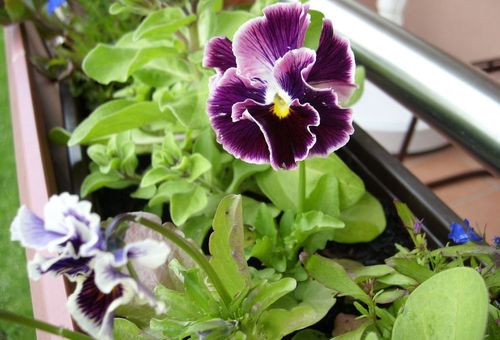

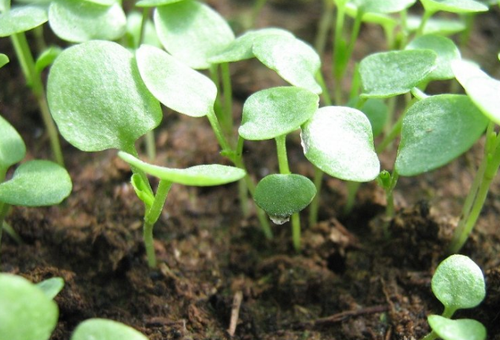
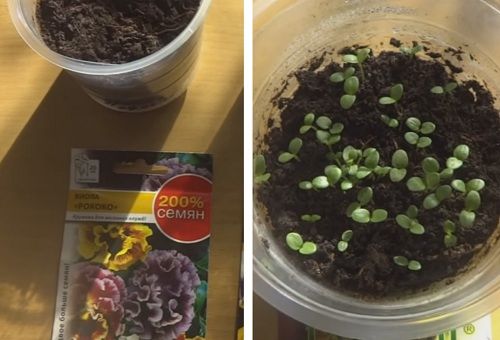
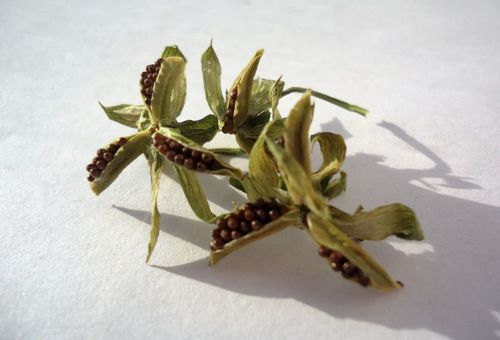
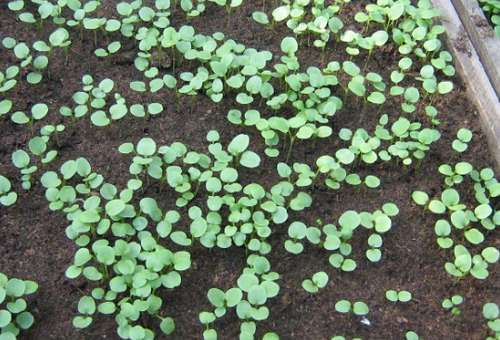
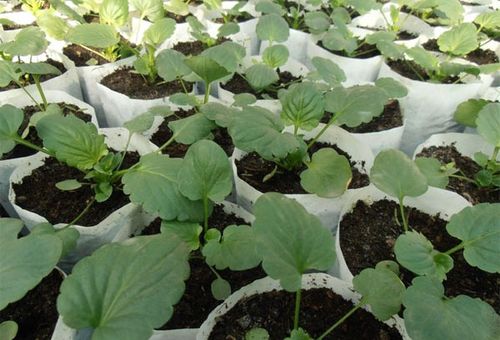

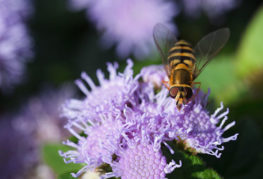

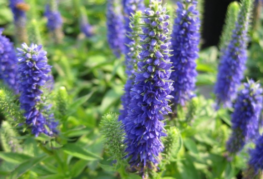
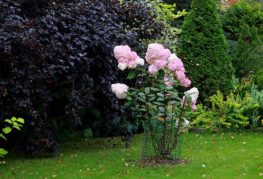
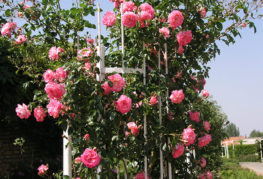
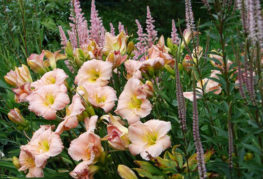
and will be published shortly.